
Photojournalism is journalism that uses images to tell a news story. It usually only refers to still images, but can also refer to video used in broadcast journalism. Photojournalism is distinguished from other close branches of photography by having a rigid ethical framework which demands an honest but impartial approach that tells a story in strictly journalistic terms. Photojournalists contribute to the news media, and help communities connect with one other. They must be well-informed and knowledgeable, and are able to deliver news in a creative manner that is both informative and entertaining.

Joel-Peter Witkin is an American photographer who lives in Albuquerque, New Mexico. His work often deals with themes such as death, corpses, often featuring ornately decorated photographic models, including people with dwarfism, transgender and intersex persons, as well as people living with a range of physical features. Witkin is often praised for presenting these figures in poses which celebrate and honor their physiques in an elevated, artistic manner. Witkin's complex tableaux vivants often recall religious episodes or classical paintings.
David Goldblatt HonFRPS was a South African photographer noted for his portrayal of South Africa during the period of apartheid. After apartheid had ended he concentrated more on the country's landscapes. What differentiates Goldblatt's body of work from those of other anti-apartheid artists is that he photographed issues that went beyond the violent events of apartheid and reflected the conditions that led up to them. His forms of protest have a subtlety that traditional documentary photographs may lack: "[M]y dispassion was an attitude in which I tried to avoid easy judgments. . . . This resulted in a photography that appeared to be disengaged and apolitical, but which was in fact the opposite." He has numerous publications to his name.

Fine-art photography is photography created in line with the vision of the photographer as artist, using photography as a medium for creative expression. The goal of fine-art photography is to express an idea, a message, or an emotion. This stands in contrast to representational photography, such as photojournalism, which provides a documentary visual account of specific subjects and events, literally representing objective reality rather than the subjective intent of the photographer; and commercial photography, the primary focus of which is to advertise products, or services.

War photography involves photographing armed conflict and its effects on people and places. Photographers who participate in this genre may find themselves placed in harm's way, and are sometimes killed trying to get their pictures out of the war arena.
Joel Sternfeld is an American fine-art photographer. He is best known for his large-format color pictures of contemporary American life and identity. His work contributed to the establishment of color photography as a respected artistic medium. Furthering the tradition of roadside photography started by Walker Evans in the 1930s, Sternfeld documents people and places with unexpected excitement, despair, tenderness, and hope. Ever since the 1987 publication of his landmark “American Prospects,” Sternfeld’s work has interwoven the conceptual and political, while being steeped in history, landscape theory and his passion for the passage of the seasons. Sternfeld’s is a beautiful and sad portrait of America - ironic, lyrical, unfinished, seeing without judging.

Stephen Shore is an American photographer known for his images of scenes and objects of the banal, and for his pioneering use of color in art photography. His books include Uncommon Places (1982) and American Surfaces (1999), photographs that he took on cross-country road trips in the 1970s.
Christopher Williams is an American conceptual artist and fine-art photographer. He lives in Cologne and works in Düsseldorf.

Sports photography refers to the genre of photography that covers all types of sports.
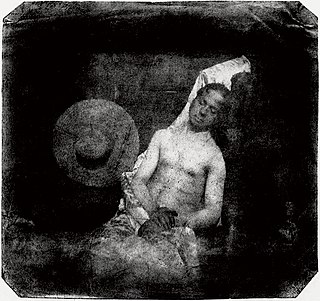
Conceptual photography is a type of photography that illustrates an idea. There have been illustrative photographs made since the medium's invention, for example in the earliest staged photographs, such as Hippolyte Bayard's Self Portrait as a Drowned Man (1840). However, the term conceptual photography derives from conceptual art, a movement of the late 1960s. Today the term is used to describe either a methodology or a genre.

A unit still photographer, or simply a still photographer creates film stills, still photographic images specifically for use in the marketing and publicity of feature films in the motion picture industry and network television productions. In addition to creating photographs for the promotion of a film, the still photographer contributes daily to the filming process by creating set stills. With these, the photographer is careful to record all details of the cast wardrobe, set appearance, and background.

Romano Cagnoni was an Italian photographer who spent most of his professional life based in London.

Bill Dane is a North American street photographer. Dane pioneered a way to subsidize his public by using photographic postcards. He has mailed over 50,000 of his pictures as photo-postcards since 1969. As of 2007, Dane's method for making his photographs available shifted from mailing photo-postcards to offering his entire body of work on the internet.

A photo op, short for photograph opportunity, is an arranged opportunity to take a photograph of a politician, a celebrity, or a notable event.
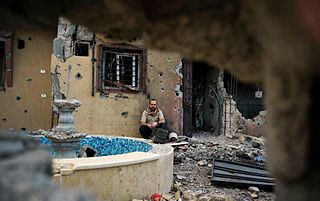
André Liohn is a freelance photojournalist born in Botucatu, Brazil, frequently contributing to the publications Der Spiegel, L'Espresso, Time, Newsweek, Le Monde, Veja and others.
Santu Mofokeng was a South African news and documentary photographer who worked under the alias Mofokengâ. Mofokeng was a member of the Afrapix collective and won a Prince Claus Award.
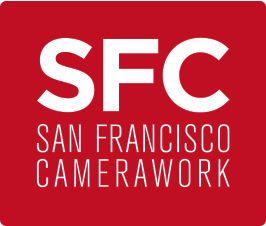
SF Camerawork is a non-profit art gallery in San Francisco, California dedicated to new ideas and directions in photography.
Frank Horvat was an Italian photographer who lived and worked in France. He is best known for his fashion photography, published between the mid 1950s and the late 1980s. Horvat's photographic opus includes photojournalism, portraiture, landscape, nature, and sculpture. He was the recipient of the Fondazione del Centenario Award in 2010 for his contributions to European culture.
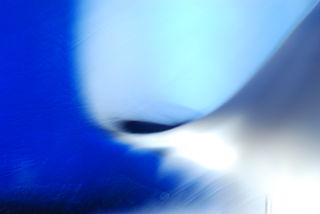
Abstract photography, sometimes called non-objective, experimental or conceptual photography, is a means of depicting a visual image that does not have an immediate association with the object world and that has been created through the use of photographic equipment, processes or materials. An abstract photograph may isolate a fragment of a natural scene in order to remove its inherent context from the viewer, it may be purposely staged to create a seemingly unreal appearance from real objects, or it may involve the use of color, light, shadow, texture, shape and/or form to convey a feeling, sensation or impression. The image may be produced using traditional photographic equipment like a camera, darkroom or computer, or it may be created without using a camera by directly manipulating film, paper or other photographic media, including digital presentations.
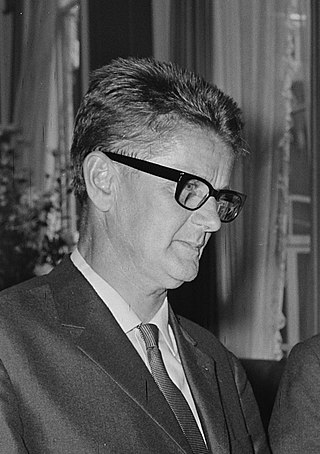
Casparus Bernardus Oorthuys, known as Cas Oorthuys, was a Dutch photographer and designer active from the 1930s until the 1970s.















